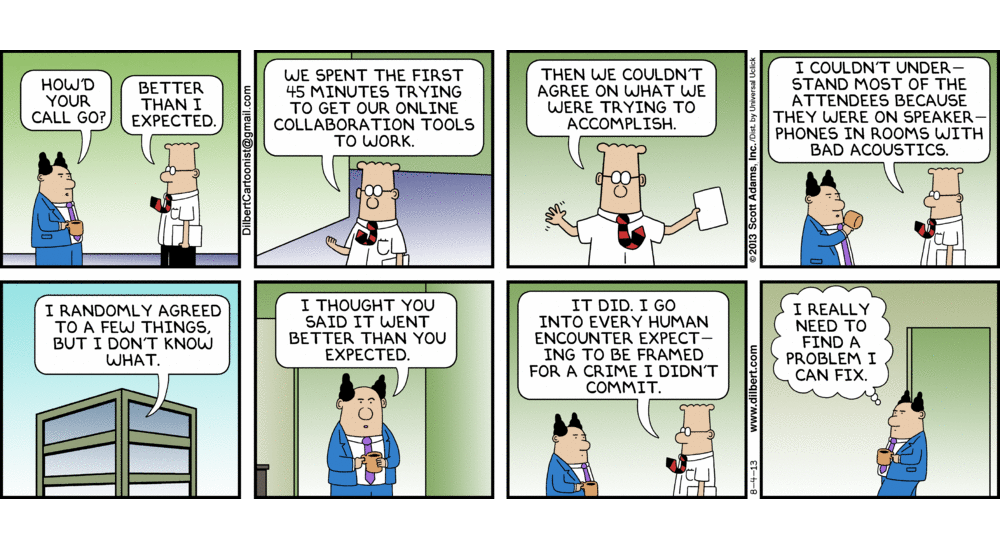Zoom is not the problem – our meeting-centric workflow is

We are now several weeks into lockdown and are starting to acknowledge that this “new normal” maybe with us for a while.
As introverts settle into their newfound bliss, extroverts begin to climb the walls, and managers come up with new and increasingly creative ways of stalking their employees, there is talk of a silver lining: the skeptics may finally embrace remote work.
It shouldn't have taken a pandemic, but here we are.
Alas, as it often turns out, the more things change, the more they stay the same.
Zoom and gloom
As more and more countries mandate that people stay home for all but their essential needs, companies were forced to finally confront their squeamishness about remote work. But rather than discovering a new, more productive way of working, managers had to scramble to transition their teams to remote work with only days' notice.
No more tapping on your employees' shoulders and peeking at their screens. The managerial paranoia begins to settle in... Are they even working?
With no time to develop proper remote work processes, it's understandable that most managers went for the next best thing: as much virtual face-time as possible.
For most workers, that meant an endless tsunami of Zoom meetings.

Long the bane of remote workers, Zoom's use has exploded over the past few weeks, from 10 million daily users in December to more than 200 million today. Its shares have surged by 49% since the end of January.
But with popularity comes scrutiny. Worrying reports come almost daily about “Zoom bombing” incidents, reports of calls “mistakenly” routed through China and user data sent to Facebook, ambiguous use of the term “end-to-end encryption” in their marketing materials, and overall questionable security practices.
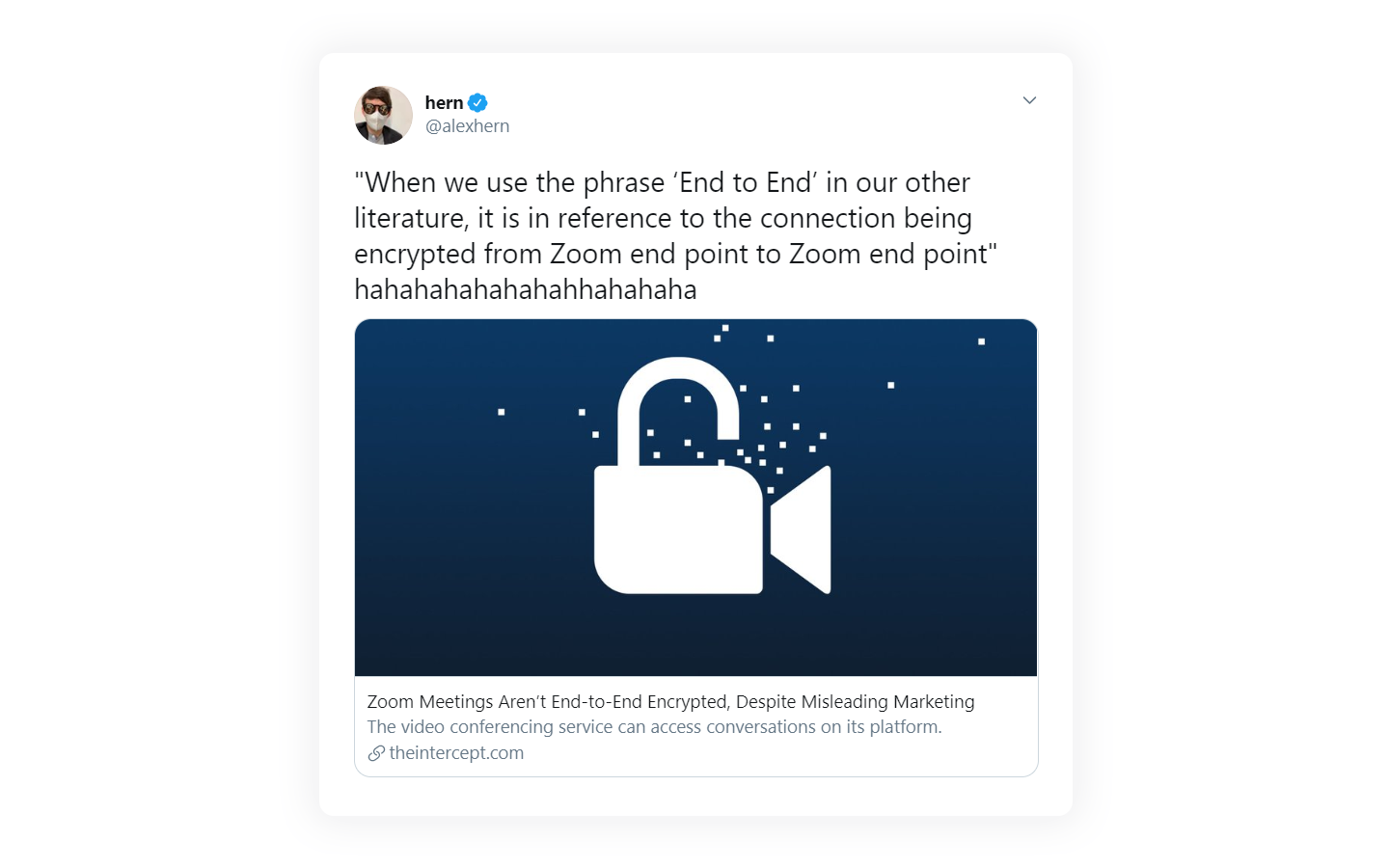
To be fair, one didn't need to go far to come across red flags. “Does Zoom sell Personal Data?” asked one subheading in Zoom's Privacy Policy (hastily updated on March 29, 2020). “Depends what you mean by 'sell,'” went the next sentence, which has since been removed.
“I really messed up,” admitted Zoom CEO Eric Yuan on April 3rd, promising that the firm would make amends. Going in full damage control mode, Zoom has announced a 90-day feature development freeze to focus solely on patching up security issues. Among other things, they have finally disabled their creepy attention tracking feature which would snitch on you to your boss if you dared to click away from Zoom for more than 30 seconds.
But in the meantime, thousands of their users rushed to Google in search of “Zoom alternatives”.
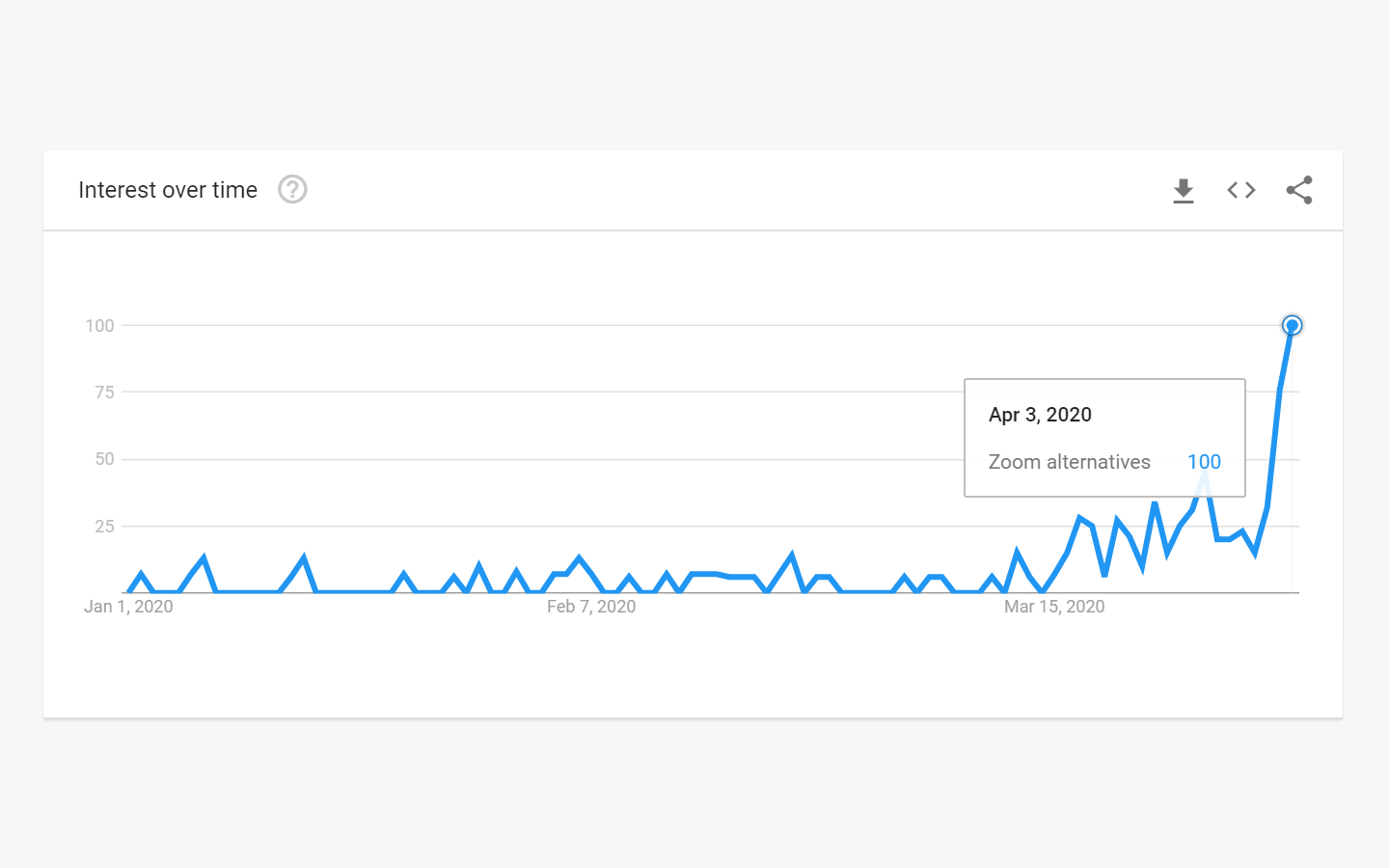
But whether you look for an alternative or choose to give Zoom a second chance, now may be a good opportunity to rethink our approach to internal communication as a whole.
The underlying problem may not be our over-reliance on video conferencing software with security loopholes – it's our general over-reliance on meetings to communicate.
Meetings as a first resort
Meetings are a staple of life – it's not surprising that many managers of remote teams default to them. Seeing your team's faces and hearing them discuss work is familiar and comforting.
But talking about work isn't real work. It takes up time, energy, and resources, and feels like work, but it doesn't get the important stuff done.
Sure, sometimes a face-to-face discussion is the best way to make progress – when you need to work through a complex problem, for example. Virtual meetings are also a good way to foster connection between team members and build culture.
But when meetings are the norm – the first resort, the go-to tool to discuss, debate, and solve every problem and share every update – they no longer work.
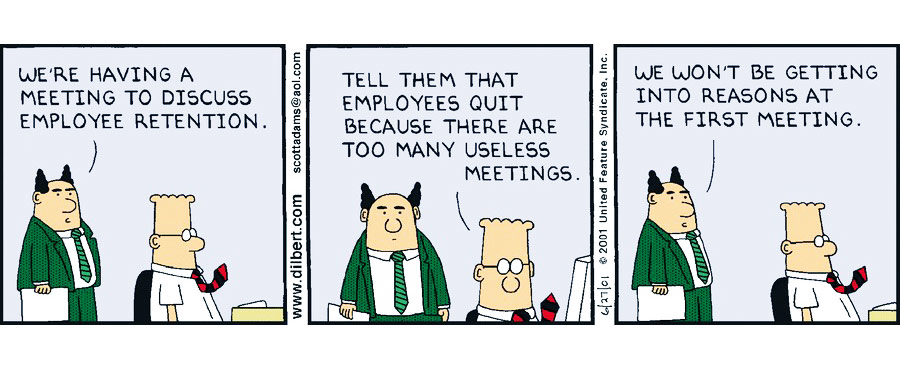
Being connected vs. being productive
Meetings – virtual or otherwise – should be viewed skeptically from the outset, as risks to productivity rather than opportunities to make progress.
They may feel like the fastest way to share information or brainstorm a solution. After all, what can be faster than real-time?
But real-time, synchronous communication – be it a Zoom meeting, a Slack message, or a shoulder tap – always interrupts, and there is a productivity cost to it, especially for those of us who operate on the “maker schedule”. For many of us, work – writing code, getting creative, solving complex problems – requires deep focus, and even the slightest distraction can have a disruptive effect.
Studies show that it takes us an average of 23 minutes and 15 seconds to refocus on a task after an interruption, and even when we do, we experience a decrease in productivity. A single status update meeting can, therefore, blow a whole afternoon by breaking it into two pieces each too small to do anything substantial in.
Async by default, sync as an exception
“The best Zoom alternative is fewer virtual meetings and more considered, long-form write-ups.”
— David Heinemeier Hansson (DHH), Co-Founder & CTO at Basecamp
A mandatory lockdown may be just what it takes for us to rethink our views on communication.
The truth is, though there is a time and place for synchronous, instant, and face-to-face communication, that time is not all the time. In fact, very few things are urgent enough to justify the potential cost of an interruption.
Good communication is about saying the right thing at the right time. For our team, that means written and asynchronous by default. Very little changed about our workflows when we switched to remote work a few weeks ago.
Weekly status updates? Project kick-offs? Quarterly and monthly planning? Retrospectives? All are carried out asynchronously, in the form of structured write-ups.
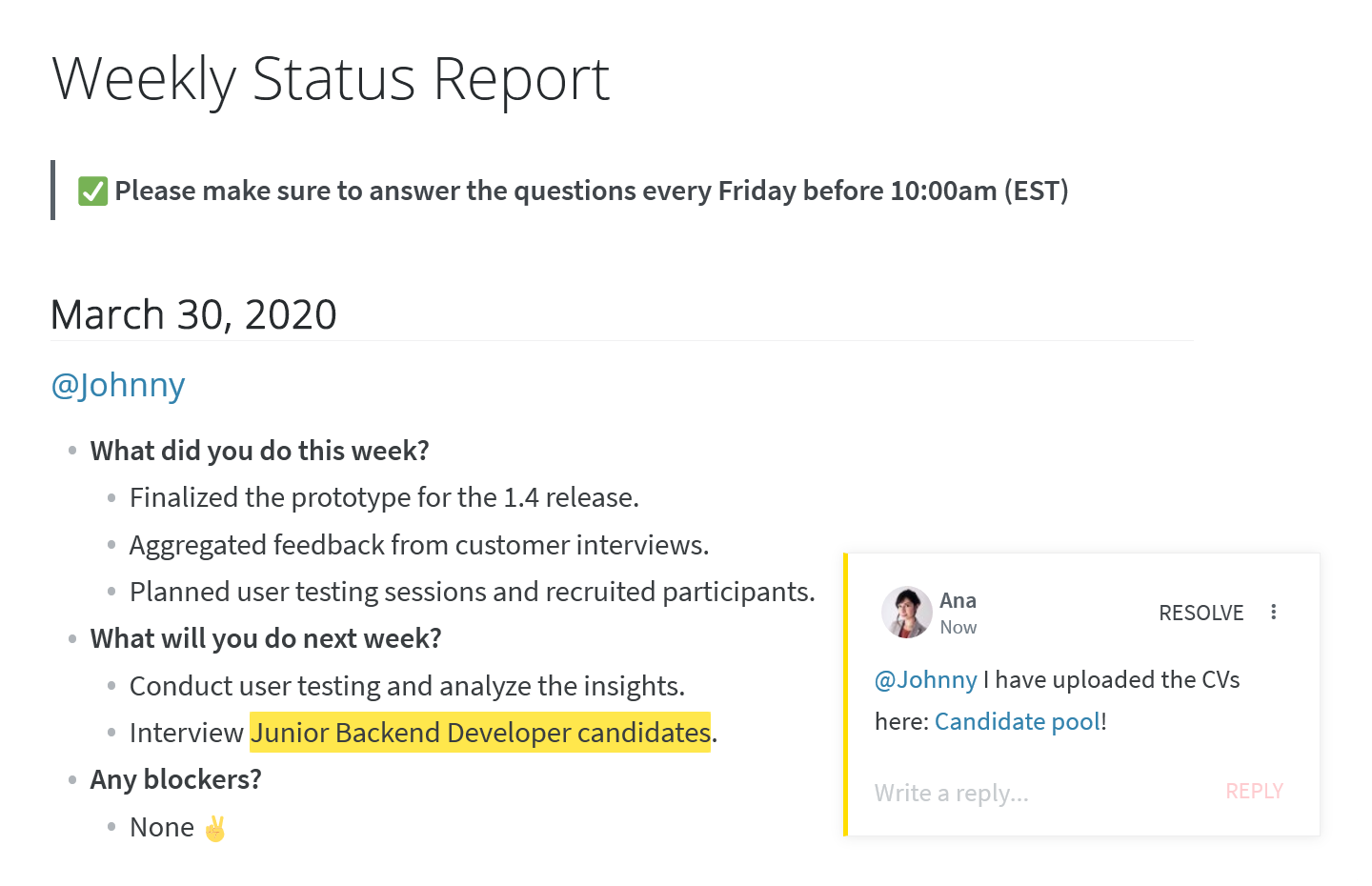
This workflow has been a major enabler for reducing the number of necessary meetings. It's important to find a remote work tool that facilitates structured, asynchronous communication and offers easy-to-use content collaboration features. Many teams successfully use Confluence and Google Docs, while our own team stores all of our docs and notes – from brand guidelines and OKRs to project documentation and team announcements – in Nuclino, a Confluence alternative for lightweight documentation.
We do still use chat and video calls, but we reserve them for emergencies, more personal team check-ins, or particularly challenging problems. Most other issues can be more efficiently addressed asynchronously.
Who has the time to write when you can talk?
Written communication does not come naturally to many of us and may seem like the slower way to get your message across. But it also tends to be of higher quality, which saves time in the long run:
Written communication is more thoughtful.
Writing down your thoughts before sharing them teaches people to communicate more clearly and avoid knee-jerk responses and chaotic brainstorming on the spot. We get to complete our point rather than share it one-line-at-a-time. We also give our colleagues enough time to absorb the information and respond in kind.
Fewer meetings mean longer uninterrupted “deep work” stretches.
One of the main benefits of working remotely is being away from the noise of an open-plan office. Why waste that opportunity by filling our days with unnecessary Zoom meetings? Asynchronous communication allows us to reserve enough time for focused, productive, and meaningful work, free of interruptions.
We have a written record of all decisions.
Even the most productive and well-planned meeting only benefits the participants. Communicating in writing automatically creates documentation and adds to our corporate wiki, increasing clarity and transparency and benefiting everyone, including our future employees.
It's not that we shouldn't have meetings at all. Rather, we need to recognize their inherent risks and hidden costs. Much like Slack, Zoom makes real-time communication so easy and accessible, it's tempting to make it our default. But just because it's easy, doesn't mean it's helping us get our work done.
As Zoom scrambles to deal with all the skeletons that came bursting out of its closet and braces for a growing number of class-action lawsuits, now may be a good time to question and reflect on our workflows.
